Looking for the softest, chewiest snickerdoodle cookies? These classic cinnamon-sugar cookies bake up thick, buttery, and crackly on top with that signature tangy snickerdoodle flavor everyone loves.
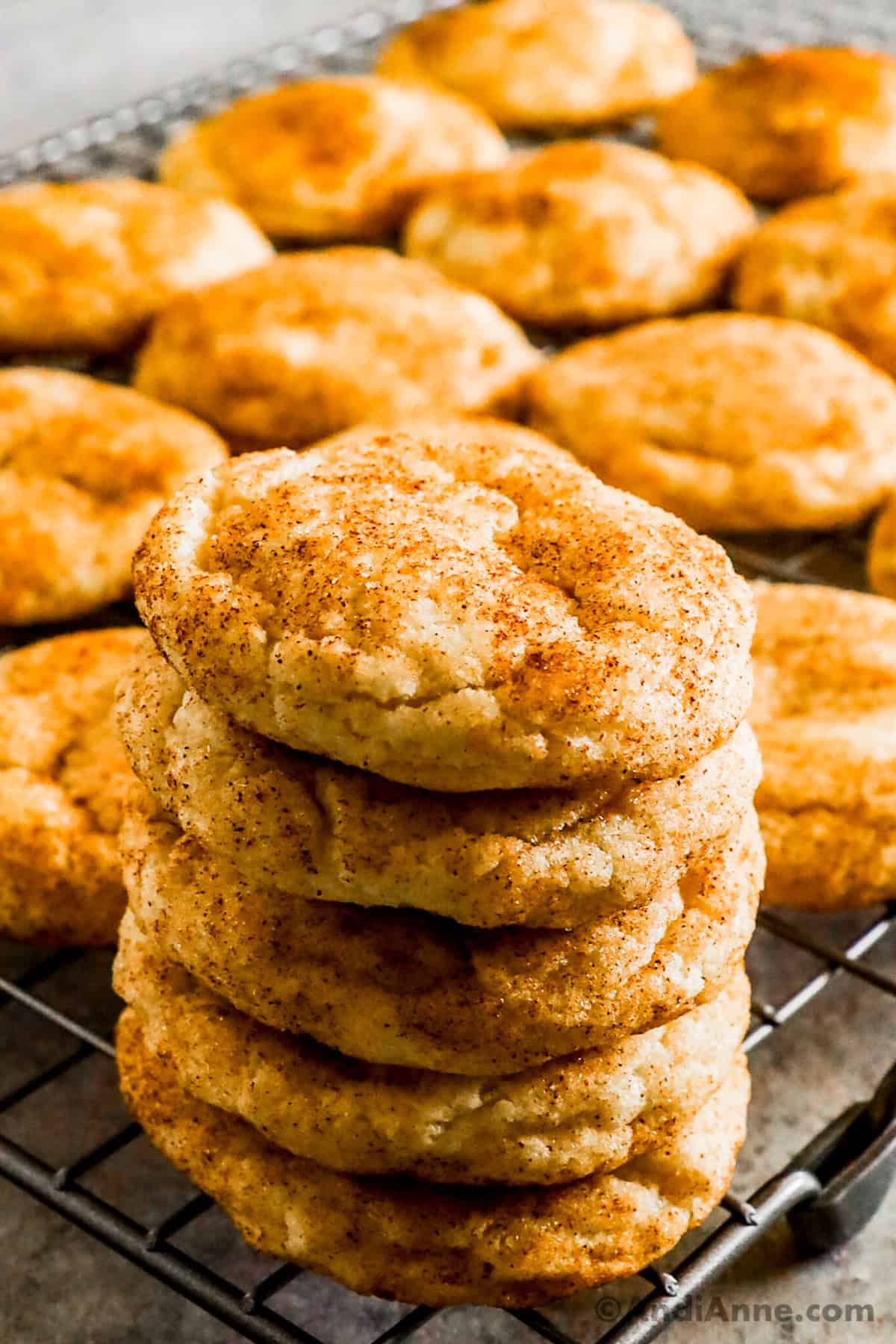
Why You'll Love This Recipe
Snickerdoodles are a favorite vintage American cookie for a reason… warm cinnamon, soft centers, crisp edges, and a melt-in-your-mouth bite. If you've never made them from scratch, you're about to see why they're a total "forever recipe" in so many homes.
- Soft + chewy texture thanks to the perfect mix of cream of tartar and butter. (Try my Soft chewy ginger cookies next!)
- Thick, puffy cookies that don't go flat (even without chilling the dough).
- Classic cinnamon-sugar coating with crackly tops.
- Holiday-favorite but simple enough to bake year-round. See all my cookie recipes for more ideas.
- Beginner-proof with clear troubleshooting for spreading, flattening, and dryness tips below.
📌 TOP READER REVIEW:
"This is the BEST recipe I have found for Snickerdoodles! Make them, you will not regret it!" - Emily
Note From Andi
If you've ever baked snickerdoodles, you know they can be a little dramatic. One batch comes out soft and puffy, the next spreads thin, and sometimes they refuse to crack on top no matter how perfectly you follow the recipe - been there.
I've tested this dough every which way... different butters, different oven temps, overmixed, undermixed, chilled, unchilled, and after reading through tons of reader comments, I've seen every result from other kitchens too.
This updated version combines all of those lessons into one reliable, soft-and-chewy cookie that stays that way for days. It's the recipe I trust, and I think it'll be your go-to snickerdoodle recipe from now on.
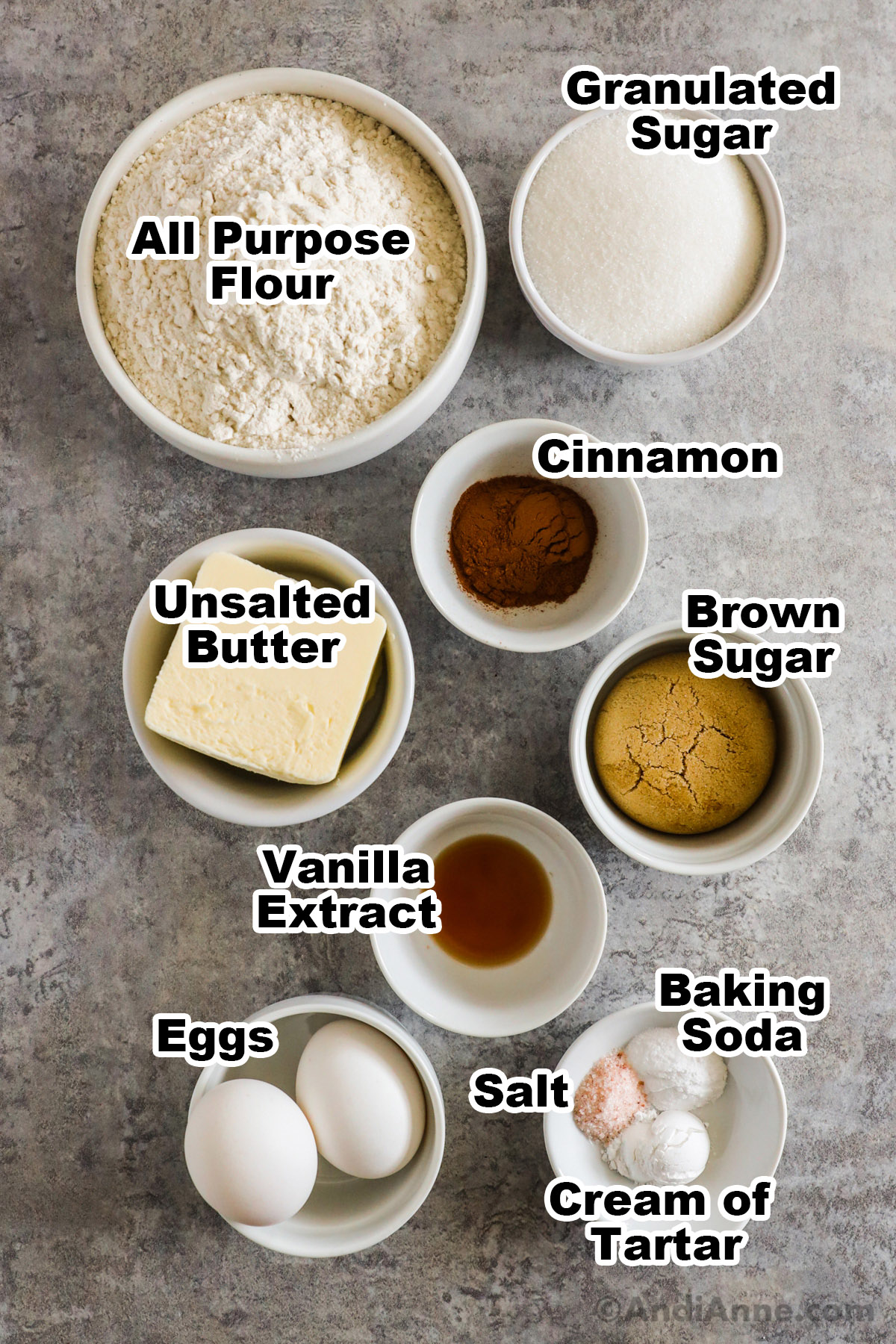
Recipe Ingredients
- 3 ¼ cups all-purpose flour - spooned and leveled
- 1 ½ tsp cream of tartar - must be fresh!
- 1 tsp baking soda - must be fresh!
- ½ tsp salt
- 1 cup unsalted butter, softened to room temperature
- 1 ⅓ cups granulated sugar
- ⅓ cup packed brown sugar
- 2 large eggs, room temperature
- 1 ½ tsp vanilla extract
Cinnamon-Sugar Coating:
- ⅓ cup granulated sugar
- 1 ½ Tbsp cinnamon
Equipment Needed:
- Two baking sheets
- Parchment paper
- Hand mixer
- Medium bowl + large bowl
- Cookie scoop (helpful for even size)
Step-By-Step Instructions 👇👇
STEP 1: Prep your pans
Preheat the oven to 400°F. Line two baking sheets with parchment paper or lightly grease them.

STEP 2: Mix the dry ingredients
In a medium bowl, whisk together 3¼ cups flour, 1½ tsp cream of tartar, 1 tsp baking soda, and ½ tsp salt. Set the bowl aside.
STEP 3: Cream the butter
In a separate large bowl, beat 1 cup softened butter with a hand mixer until smooth.
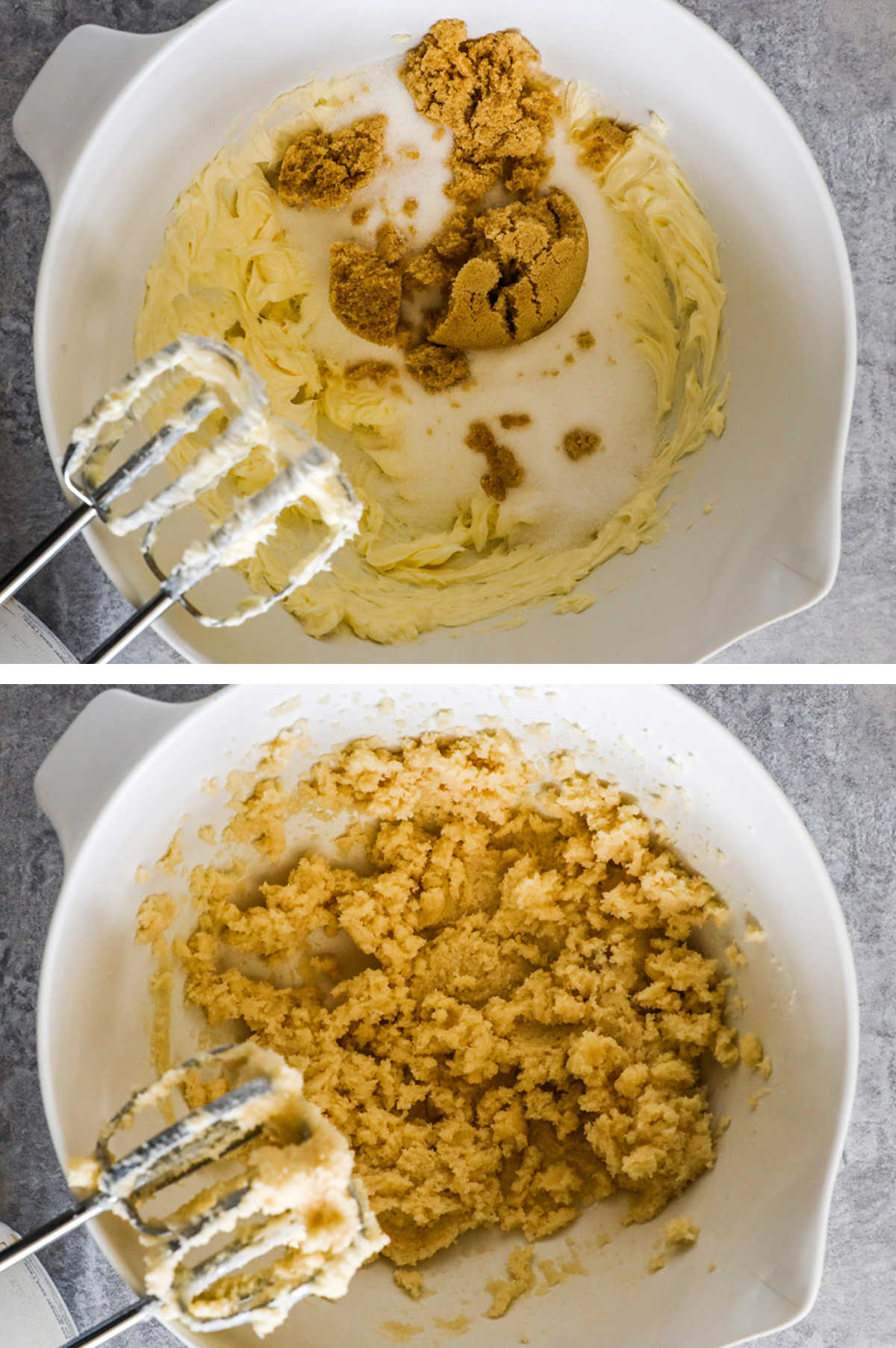
STEP 4: Add sugars
Mix 1⅓ cup granulated sugar and ⅓ cup packed brown sugar with the butter. Blend for 2 minutes, scraping the sides of the bowl when needed with a spatula. The mixture should look fluffy and pale.

STEP 5: Add eggs + vanilla
Add 2 large room-temperature eggs and 1 ½ tsp vanilla extract to the creamed butter and sugar, and beat until smooth.
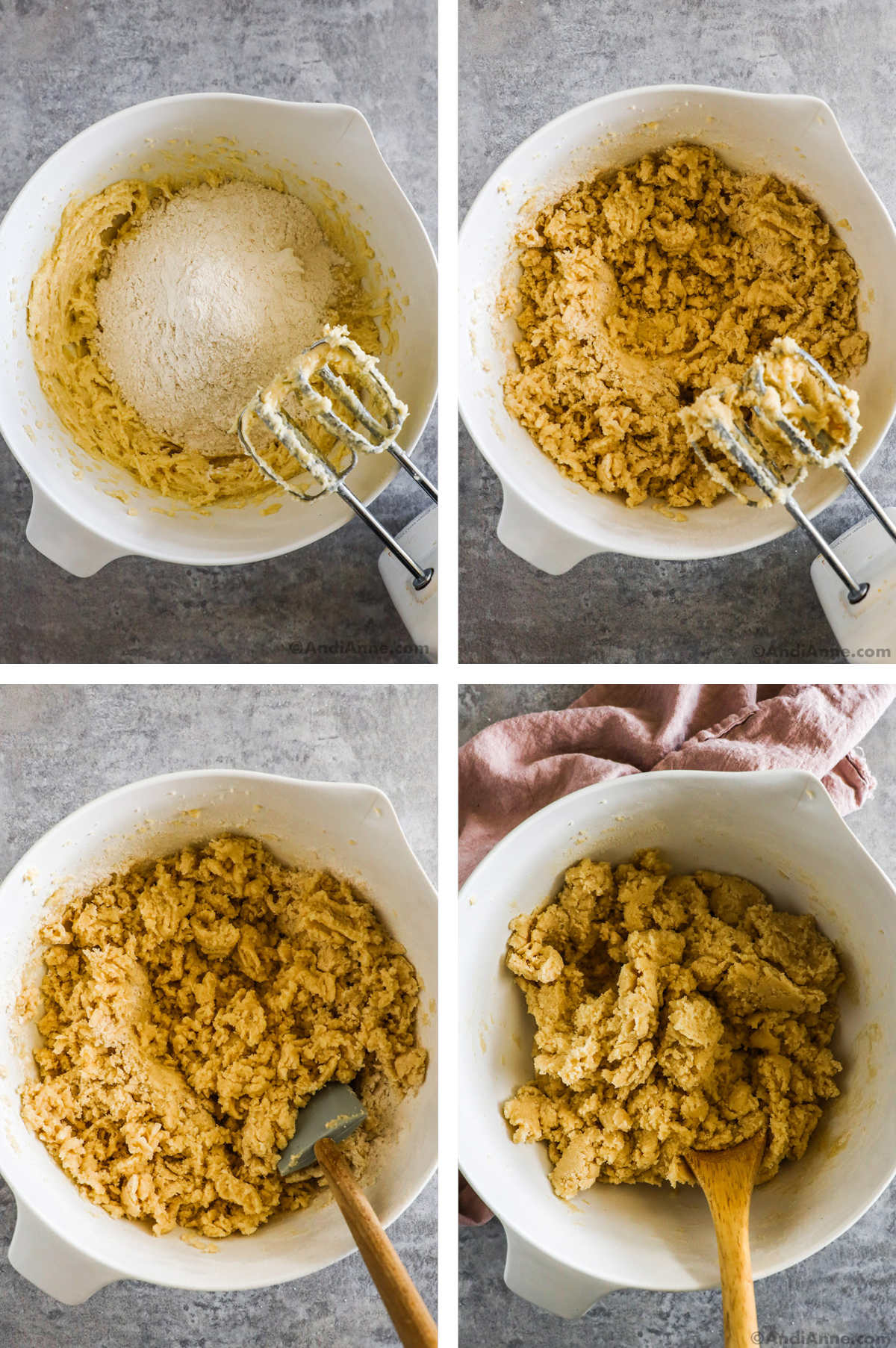
STEP 6: Add dry ingredients
Add half of the dry flour mixture to the wet ingredients and beat until just combined.
Then add the last half of dry ingredients and mix again, stopping as soon as most of the flour is incorporated.
Switch to a spatula for the last few turns - the dough should look thick, soft, and slightly sticky, with no dry flour pockets. If it's pulling away from the sides of the bowl but still feels a bit tender, you've mixed it just right.
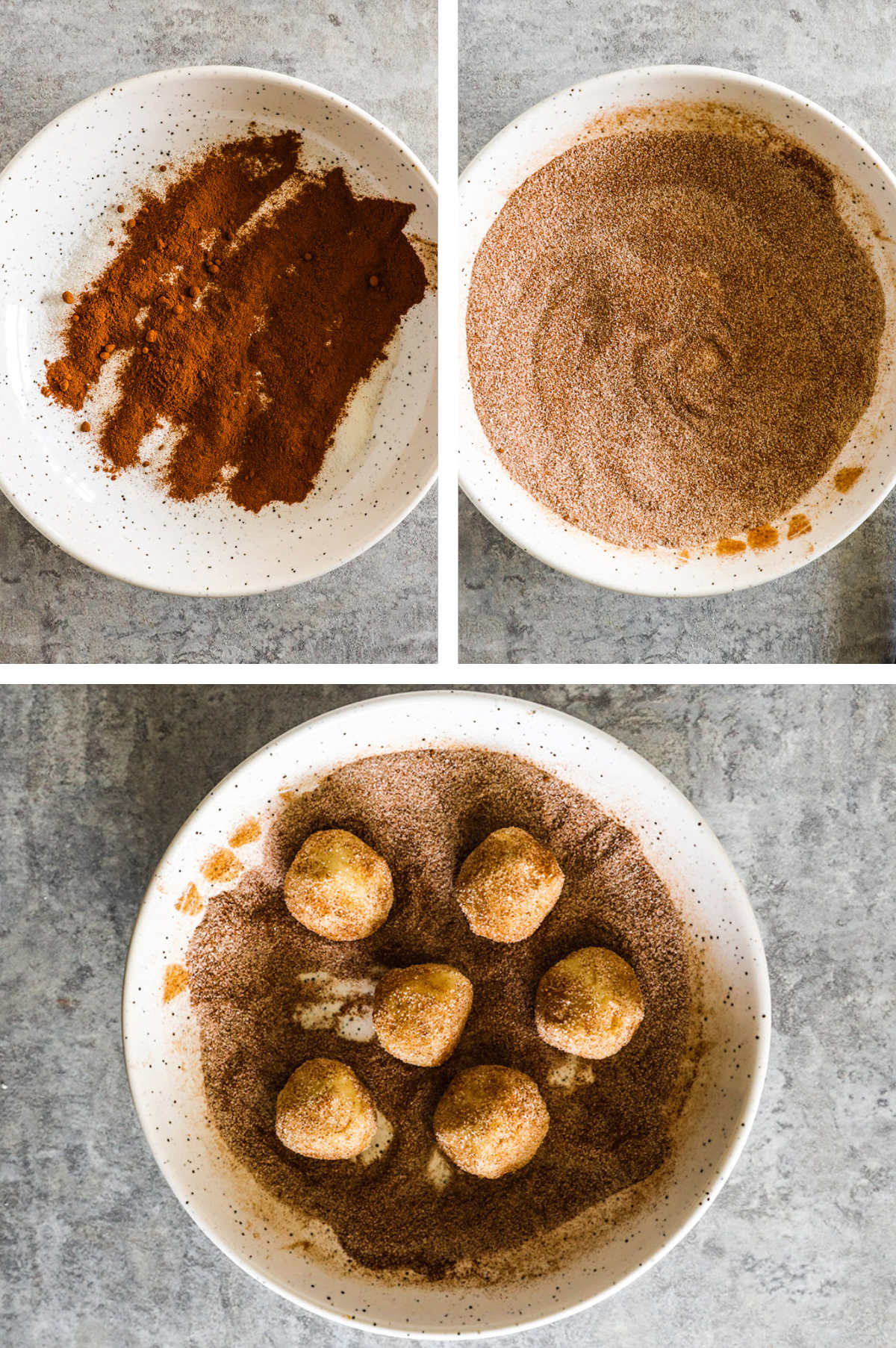
STEP 7: Roll into balls
In a shallow bowl or plate, mix ⅓ cup granulated sugar and 1 ½ Tbsp cinnamon for the cinnamon sugar coating.
Create a cookie ball by rolling 1 Tbsp of cookie dough in the palms of your hands. Roll the ball in the cinnamon sugar mixture until it's evenly coated on all sides.
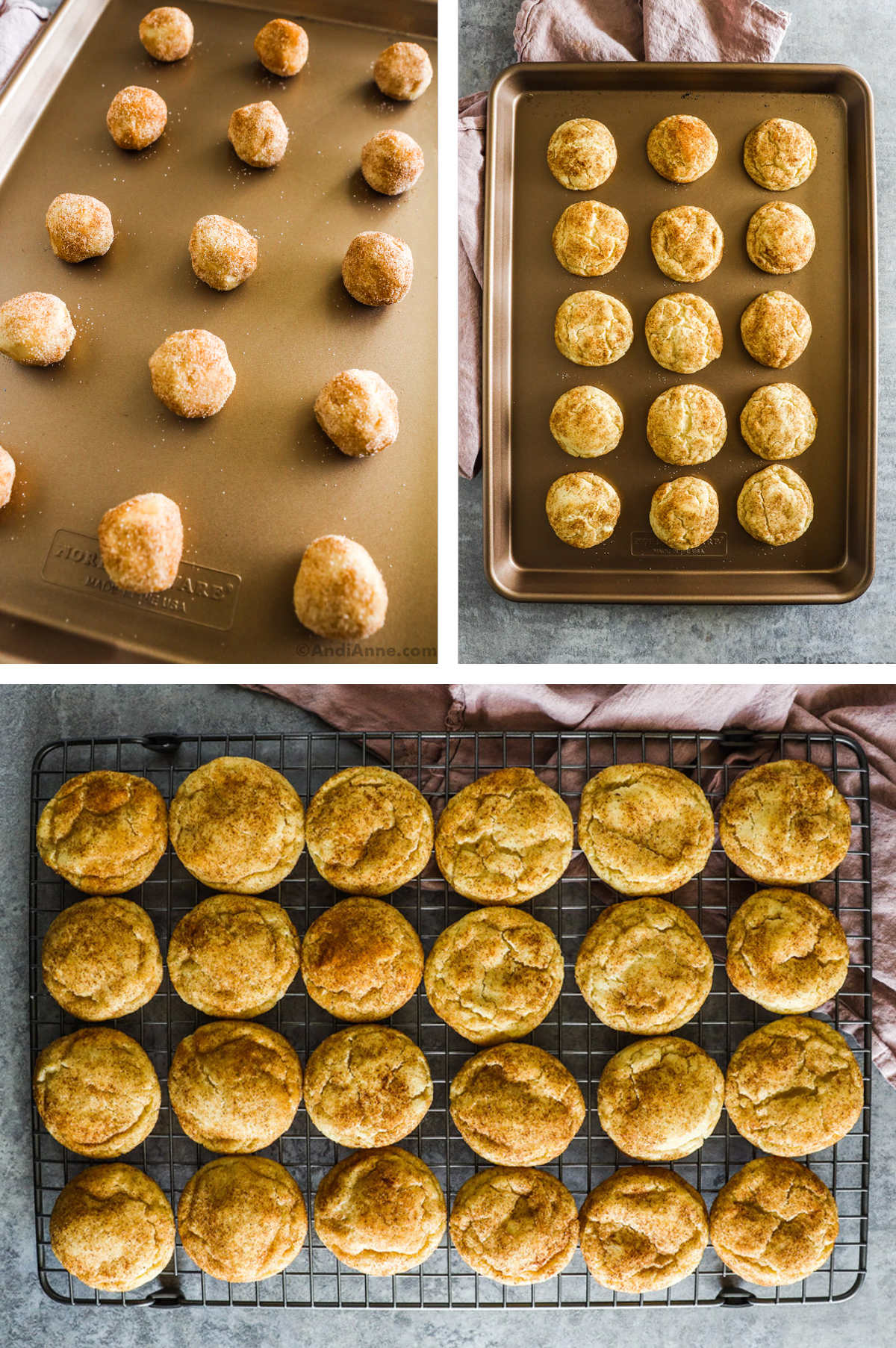
STEP 8: Bake Cookies
Place the cookie dough balls 2" apart on two baking sheets.
Optional: If your kitchen is warm or you want extra thick, puffy cookies, chill the dough balls for 20 minutes before baking.
Bake cookies for 6-8 minutes. Remove the pan from the oven, and let cookies sit for 2 minutes on the baking sheet. Use a thin spatula to gently scoop under the cookie and transfer to a rack to cool completely.
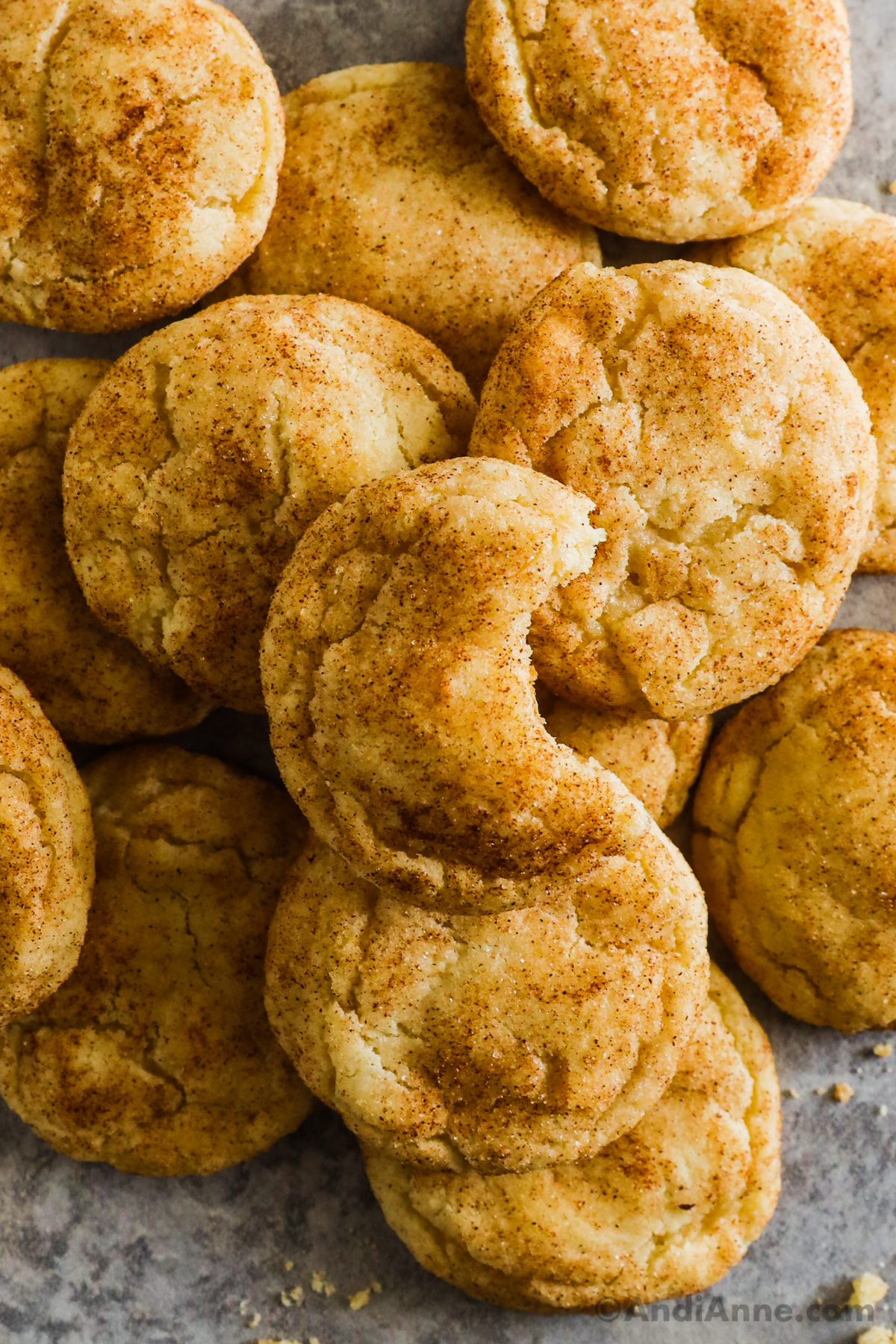
Tested and Proven Tips
- Room-temp butter and eggs help the dough mix evenly. Cream them longer than you think (a full 1-2 mins). You want pale, fluffy butter - this traps air and gives you thick cookies.
- Chill if your kitchen is warm. Depending on the climate where you live, chilling can make a big difference to prevent cookies spreading.
- Don't overbake. They should look pale and slightly underdone in the center.
- Use fresh cream of tartar. Expired cream of tartar = flat, dull cookies.
Reader Reviews
Real bakers have tested this recipe dozens of times - here are some of their favorite results from my Pinterest:
- "These cookies were perfect! Crisp edges, soft middle, and I didn't change a thing. Definitely recommend." - Dawn
- "Followed the recipe exactly and they came out perfect! Fresh ingredients make a huge difference, especially the cream of tartar. Mine baked up fluffy inside with a nice cookie crunch on the outside." - Lotus
- "I accidentally burned my first batch but the flavor was still incredible. Best snickerdoodle recipe I've ever made! Currently baking a second batch." - Tenley
- "This came out perfect! I swapped in a few drops of lemon juice for the cream of tartar and it worked beautifully." - Lauren
Troubleshooting Tips
Here are the issues bakers run into most often and how to fix them quickly:
Cookies turned out flat:
- Your dough was probably too warm or the butter was too soft. Chill the dough for about 20 minutes and they'll hold their shape better.
Cookies stayed round and didn't spread:
- Some ovens run hotter than you think. Try baking at 375°F, or gently press the dough balls halfway through baking to help them flatten and crackle.
Dough felt too sticky:
- Humidity can make flour behave differently. Add 1-2 tablespoons of extra flour and chill the dough for a few minutes.
No crackly tops:
- This usually means the butter and sugar weren't creamed long enough, or your cream of tartar is expired. Fresh cream of tartar = classic snickerdoodle texture.
Baking at high altitude:
- At high altitude, readers had best results chilling the dough 20 minutes, pressing each ball slightly, and baking 10-12 minutes.
Variations Readers Loved
These tweaks came straight from readers who tested the recipe in different kitchens, ovens, and climates, and they all had great results:
• Swap the cream of tartar: A few readers used a splash of lemon juice instead and still got great results.
• Boost the cinnamon: Add extra cinnamon to the coating or roll the dough balls twice for an extra-crackly top.
• For thicker, puffier cookies: Chill the dough balls for 15-20 minutes before baking.
• For thinner, cracklier edges: Press each dough ball lightly with the bottom of a glass halfway through baking.
• High-altitude adjustment: Chill the dough 20 minutes and extend bake time by 1-2 minutes.
How To Store Cookies
- Cool completely first. Warm cookies release steam, which can make them soft or gummy once stored.
- Room-temperature storage: Keep cookies in an airtight container or zip-top bag.
Humid climate? Store in the fridge so they stay firm and don't turn mushy. - Prevent sticking: Add a sheet of parchment paper between layers if you're stacking them.
- Freezing: These freeze beautifully for up to 6 months. Place in a freezer bag and press out as much air as possible to avoid freezer burn. Thaw at room temp, or eat straight from frozen - we do this all the time.
How do I make without cream of tartar?
Cream of tartar gives snickerdoodles their classic tang and chewy texture, so the flavor will be slightly different with substitutions.
If you don't have cream of tartar on hand, you can substitute it with lemon juice or white vinegar. For this recipe, use 1 tsp of lemon juice or white vinegar for every ½ tsp of cream of tartar called for in the recipe.
Fun Serving Ideas
- Dip half of the cookies in melted white chocolate.
- Add to holiday cookie trays along with my Christmas crack (cracker candy) and other holiday baking recipes.
- Pack as neighbor gifts with my oatmeal cookies.
- Serve warm with coffee or creamy homemade hot chocolate
- Crumble over vanilla ice cream.
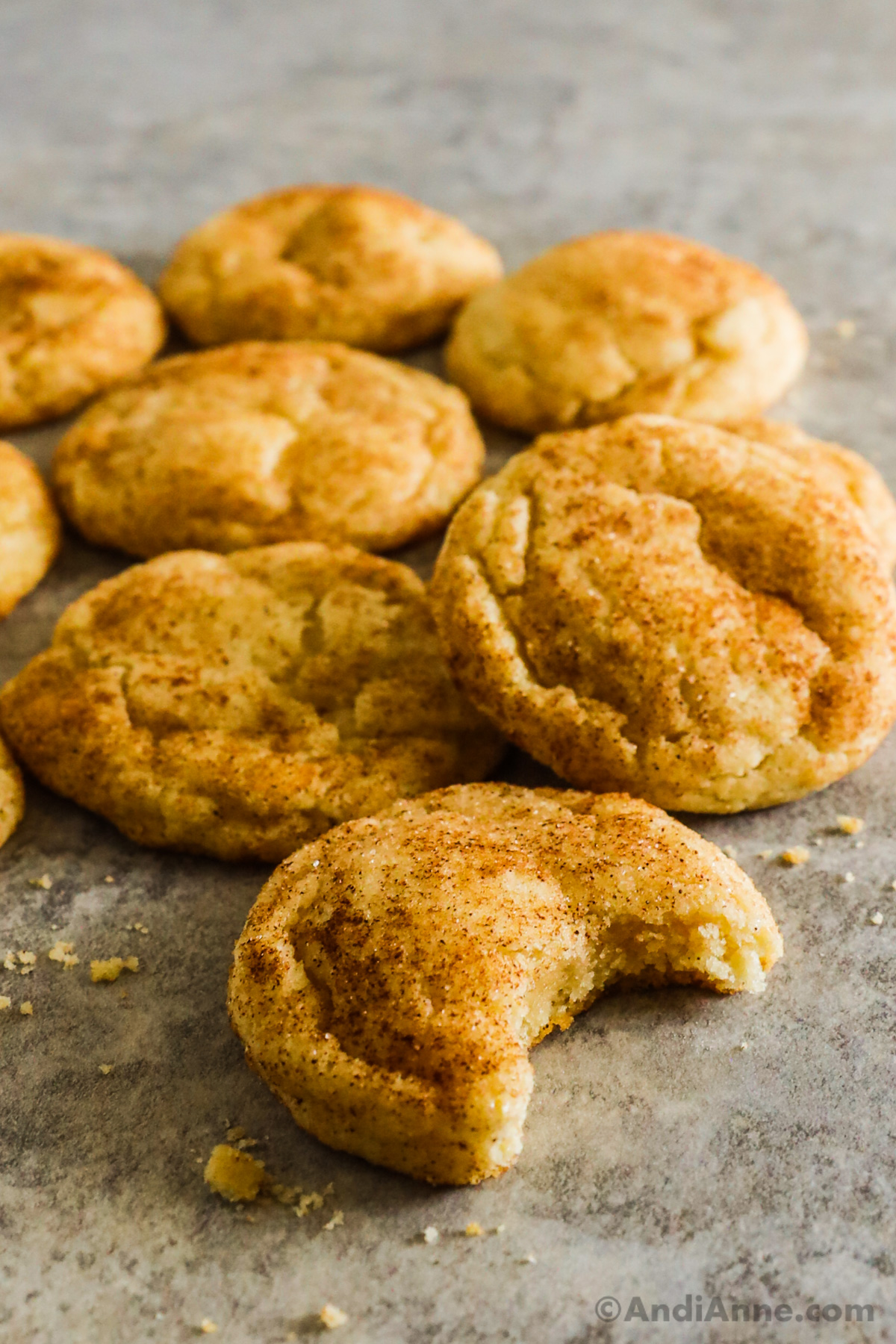
FAQs
Cream of tartar gives snickerdoodles their signature tangy flavor and soft, chewy texture. It also helps the cookies puff instead of spreading too much, and it creates those classic crackly tops when the cookies bake. Without it, the cookies taste more like a regular sugar cookie.
Yes. Cream of tartar is what gives snickerdoodles their classic tang and chewy texture, but you can swap it if you don't have any. Use 1 teaspoon lemon juice or white vinegar for every ½ teaspoon of cream of tartar in the recipe. The flavor will be slightly different, but the cookies will still bake up soft, chewy, and delicious.
Snickerdoodles are traditionally soft, chewy, and slightly puffy with crisp edges and a tender center. If yours turned out crispy all the way through, they were likely overbaked or too flat from warm dough. Pull them from the oven when the centers still look pale and soft, and they'll set perfectly as they cool.
Cakey snickerdoodles usually mean the dough had too much flour or the butter and sugar were over-creamed, which adds extra air and turns the texture more cake-like. It can also happen if the dough was overmixed once the dry ingredients were added. For softer, chewier cookies, lightly spoon and level the flour, mix the dough just until combined, and stop creaming the butter once it's fluffy but not billowy.
Snickerdoodles puff from air in the dough and the reaction between baking soda + cream of tartar. If your cookies stayed flat, it usually means one of three things: the butter was too soft, the dough was overmixed, or your leaveners (especially cream of tartar) were no longer fresh. Chilling the dough for 15-20 minutes helps the cookies hold their shape, and using fresh cream of tartar makes a big difference in lift and texture.
More Cookies To Try
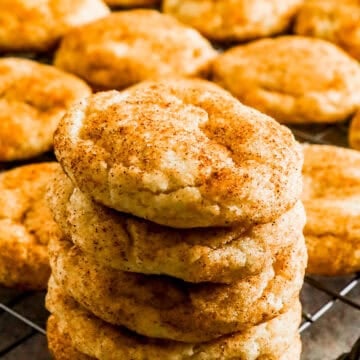
Soft and Chewy Snickerdoodle Cookies
Tap Stars To Rate!
Ingredients
- 1 cup unsalted butter - softened to room temperature
- 1 ⅓ cup granulated sugar
- ⅓ cup packed brown sugar
- 2 large eggs - room temperature
- 1 ½ tsp vanilla extract
- 3 ¼ cup all purpose flour - spooned into measuring cup and leveled
- 1 ½ tsp cream of tartar
- 1 tsp baking soda
- ½ tsp salt
Cinnamon Sugar For Rolling
- ⅓ cup granulated sugar
- 1 ½ Tbsp cinnamon
Instructions
- Preheat the oven to 400℉. Line two baking sheets with parchment paper, or lightly coat them with nonstick cooking spray.
- In a medium bowl, add 3 ¼ cup all-purpose flour - leveled in the measuring cups, 1 ½ tsp cream of tartar, 1 tsp baking soda, and ½ tsp salt. Mix and set aside for now.
- In a separate large bowl, cream 1 cup unsalted butter - softened to room temperature, using a hand mixer until smooth.
- Add 1 ⅓ cup granulated sugar and ⅓ cup packed brown sugar to the creamed butter. Mix again with a hand mixer for roughly 2 minutes until it's smooth and creamy, scrape down the sides of the bowl with a spatula when needed.
- Add 2 large room-temperature eggs and 1 ½ tsp vanilla extract to the creamed butter and sugar, and beat until smooth.
- Add half of the flour mixture and beat until just combined. Add in the other half of the flour mixture and repeat.
- You may need to stir the cookie dough by hand to mix in the rest of the flour. Stir gently and do not over-mix - just enough that all the ingredients are combined.
- In a shallow bowl or plate, mix ⅓ cup granulated sugar and 1 ½ Tbsp cinnamon for the cinnamon sugar coating.
- Create a ball by rolling 1 Tbsp of cookie dough in the palms of your hands. Roll the ball in the cinnamon sugar mixture until it's evenly coated.
- Place the cookie dough balls 2" apart on two baking sheets. Bake for 6-8 minutes, remove from the oven, and let sit for 2 minutes on the baking sheet. Use a spatula to gently scoop under the cookie and transfer to a rack to cool completely.
Notes
- Use room-temperature butter and eggs so the dough mixes smoothly and evenly.
- Cream the butter and sugars well until light and fluffy. This adds air and helps the cookies rise with soft centers.
- If your kitchen runs warm, chill the dough balls before baking to prevent spreading and keep the cookies thick and chewy.
- Slightly underbake for the best texture. The centers will finish setting as they cool.
- Store in an airtight container. In humid climates, the fridge helps prevent mushiness.
- Add parchment between layers so cookies don't stick together.
- These cookies freeze beautifully. Store up to 6 months, removing as much air from the bag as possible. Thaw at room temp or enjoy straight from frozen.
Nutrition
Nutrition info is auto-calculated and meant to be an approximation only.





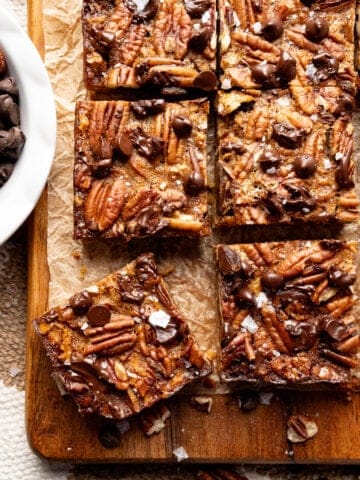
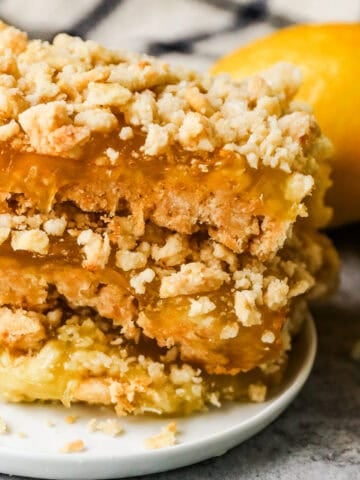
Andi Anne says
This is one of my most popular cookie recipes on the blog, and for good reason! Hope you enjoy making them too! I love how soft and chewy these cookies are. - Andi
Laurie Lindemann says
This was my first time making snickerdoodles. They turned out amazing!! I baked for 7 minutes and did not wait for the butter to be room temperature and mine were fluffy and moist. Will use this recipe again
Kathy says
Great recipe!
JesusIsLove3 says
These are great! Thanks =)
Sue says
Why a hand mixer instead of stand mixer?
Andi Anne says
Hi Sue
You can totally use both! Many people don't have a stand mixer which is why I use a hand mixer in the recipe.
Brittany C says
Made these for my husbands fire station. They all raved about them and told my husband to thank you and tell me that these were the best snickerdoodles they have ever had!
Bree says
These came out soo perfect! I Need to save and hand write this recipe!
Jennifer says
How long do you recommend chilling the dough?
Andi says
Hi! At least 30-36 mins. But it can also be chilled overnight and baked the next day.
Aisha says
I made the cookies following the recipe to a tee but when I take them out of the oven and break apart a cookie it’s wet and kind of raw on the inside. Is it suppose to be this way?
Andi says
Hi. Sometimes ovens can vary in temperature so that may be why. The cookies are quite soft inside but not supposed to be raw. Next time add 2-3 more minutes to the baking time. 🙂
Zoey says
I made these but they were really puffy are they supposed to be that way
Andi says
Yes, They are more puffy than most cookies.